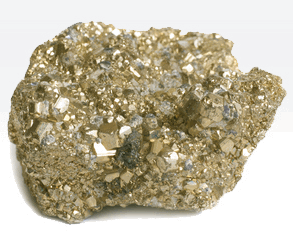Gold Guide
Gold is a precious metal that have been used since time immemorial for trading goods
and services. Given the fact that barely five ten-millionths of the Earth’s outer
layer is of gold; it is not surprising that this metal demands a pretty price. The
most popular use of gold is of course to manufacture jewelry.
History Of Gold
 The earliest use of gold has been traced all the way back to 3600 B.C in Egypt.
Ancient rock carvings have illustrations of various methods on obtaining gold. Abraham
was said to be very rich in gold and silver as well as cattle when he left Egypt.
Also, reference is made to gold in the Exodus XXV, 29 when the Lord commands Moses
to make spoons of gold for the Tabernacle.
The earliest use of gold has been traced all the way back to 3600 B.C in Egypt.
Ancient rock carvings have illustrations of various methods on obtaining gold. Abraham
was said to be very rich in gold and silver as well as cattle when he left Egypt.
Also, reference is made to gold in the Exodus XXV, 29 when the Lord commands Moses
to make spoons of gold for the Tabernacle.
More recently, it was J.W.Marshall who discovered traces of gold in the American
River in 1848 and sparked the Gold Rush in California. The rest as
they say is history.
Attributes Of Gold
Gold is a fine metal that is extremely malleable. This is very
helpful when designing jewelry since it allows artisans to create intricate patterns.
It is solid at room temperature and does not tarnish, corrode or rust.
This also makes it a popular choice of metal for manufacturing jewelry since the
ornaments retain their gold sheen.
Understanding Gold Terms
The quality of gold is defined using the term ‘Karat’. This is
different from the term ‘Carat’ used to determine the size of diamonds.
In its purest form Gold is 24K – it is not mixed with any other metals.
However, 24K gold is soft and does not lend itself well to making jewelry. It is
then mixed with other metals to increase its durability and hardness.
18K jewelry has 75% gold and 25% other metals. It is the most preferred
metal because it has a beautiful yellow color of natural gold and resilience greater
than pure gold. 14K gold is more affordable and robust but lacks the beautiful natural,
lustrous yellow gold color and hence less popular.
White Gold
White gold is an alloy of gold with another white metal like silver, palladium
or nickel. White gold can be of any Karat – 14K, 18K or any other.
Since the white metal is mixed with yellow gold, white gold naturally gains a slight
yellowish tint – it is not the brilliant white of platinum.
Many jewelers polish white gold jewelry with a final coat of Rhodium.
However, the shiny metal may wear off over time and with constant use and reveal
the slight yellow tint below. It is recommended that you should get white gold jewelry
re-polished every two years depending on wear and usage.
Caring For Your Gold Jewelry
Here are some quick tips on caring for your gold jewelry.
- Use a jewelry box to store your gold jewelry. Ensure that the box
is lined with velvet or has separate compartments for separate pieces. The pieces
can bump into each other and scratch the surface.
- If you are engaging in hardy physical activity take off your gold jewelry.
- Wash and clean gold jewelry in mild soapy water using a soft brush.
- If you own gold and diamond jewelry, check the settings of your diamonds
regularly. A loosened prong can result in the diamond falling off. You
need to get this corrected immediately.
In general, gold jewelry is sturdy and lasts for a long time if taken care of properly.